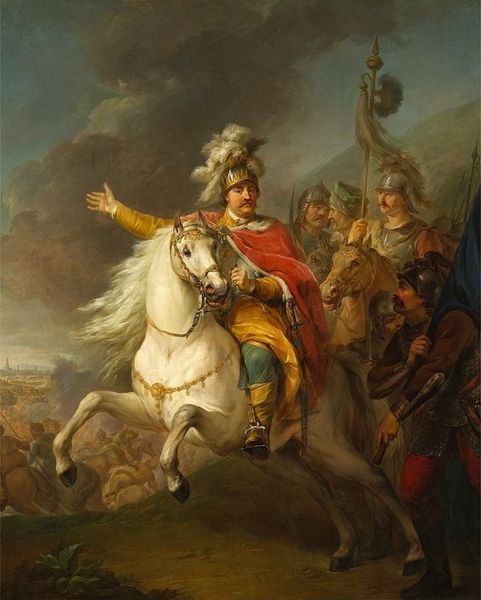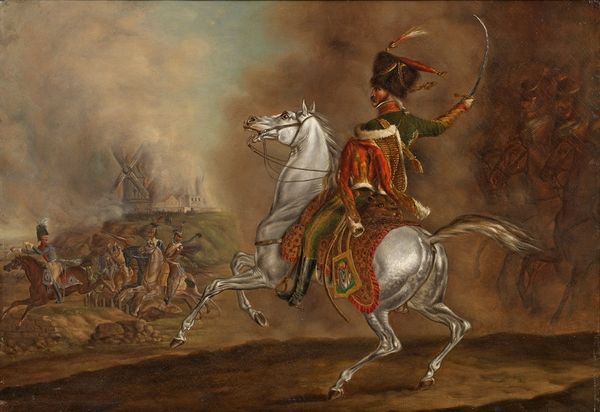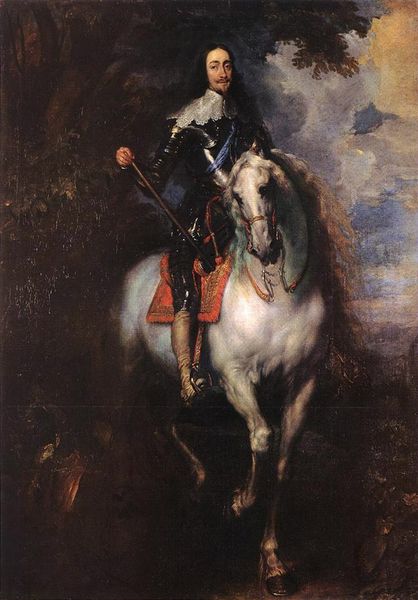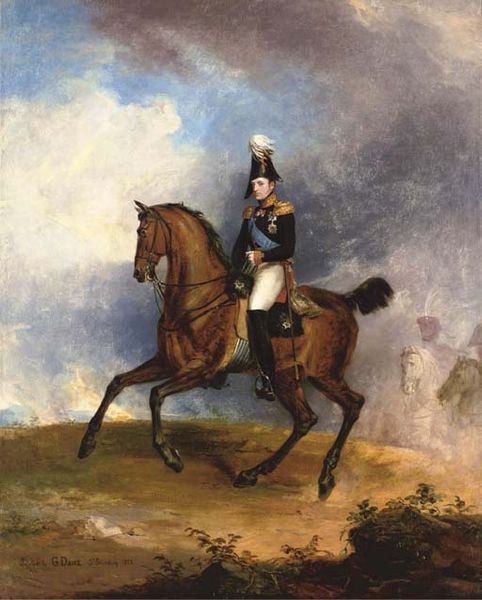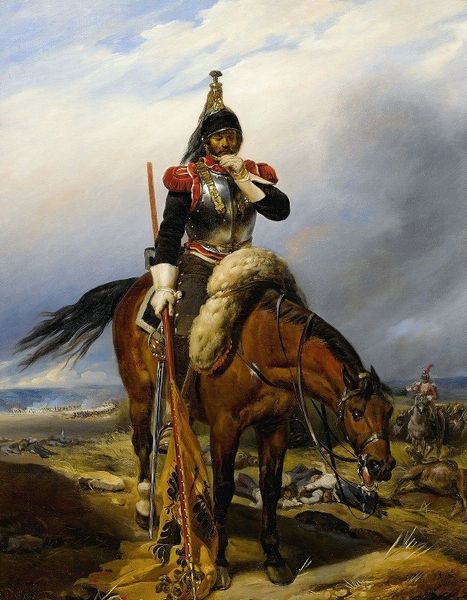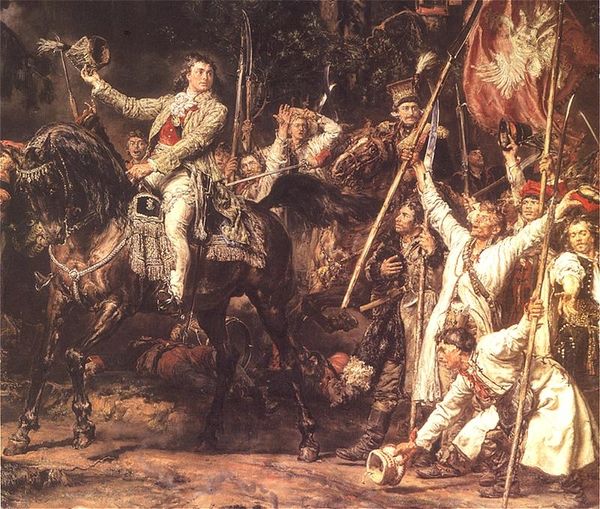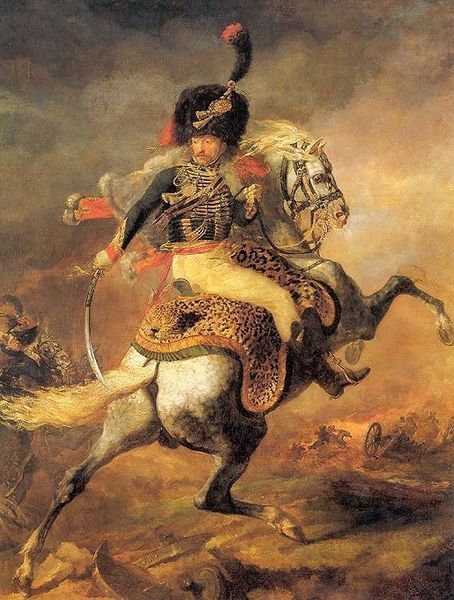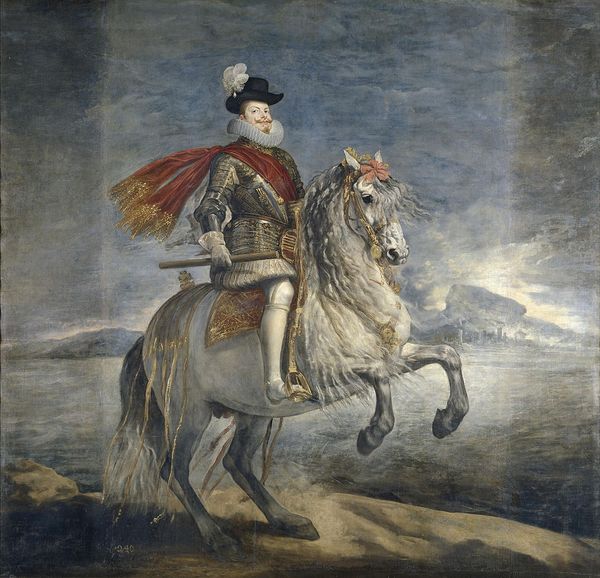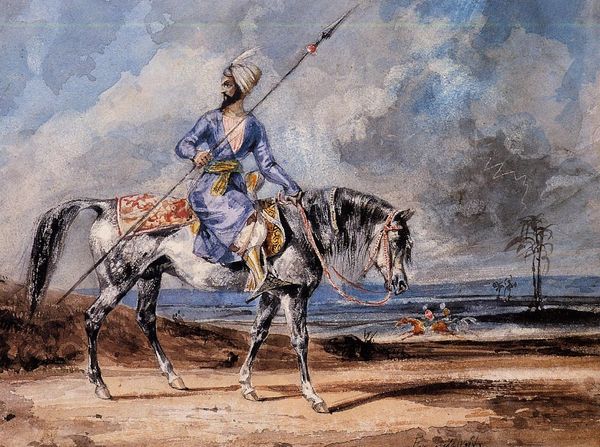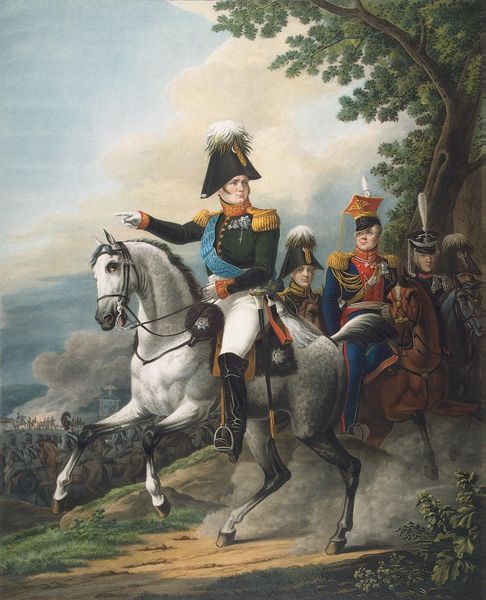
Sir John Leicester, Bt, Exercising His Regiment of Cheshire Yeomanry on the Sands at Liverpool 1828
0:00
0:00
painting, oil-paint
#
portrait
#
painting
#
oil-paint
#
landscape
#
figuration
#
oil painting
#
romanticism
#
horse
#
painting painterly
#
genre-painting
#
history-painting
Copyright: Public domain
Curator: Here we have James Ward’s epic canvas from 1828, depicting “Sir John Leicester, Bt, Exercising His Regiment of Cheshire Yeomanry on the Sands at Liverpool." It's an oil painting, and quite a large one. Editor: My first impression is of raw power! The composition surges upward and forward, dominated by that rearing white horse and Sir John brandishing his sword. It’s all diagonals and muscular forms. Curator: It's certainly meant to impress. Sir John was a patron of the arts and clearly wanted to showcase his status and leadership within the local Cheshire Yeomanry. These volunteer cavalry regiments were vital for maintaining order in a time of political and social upheaval. Editor: The artist's skill is undeniable. Look at the way Ward uses impasto in the clouds to create such dramatic chiaroscuro. The tension between the light on the horse and rider, and the darkness looming behind them is palpable! Curator: Indeed, the painting reflects anxieties about potential revolution, but also reinforces the authority of the local gentry. Ward often took commissions of this type as these allowed him to portray the patrons but also offer political commentaries. Editor: It’s interesting how Ward uses color. The cool blues and greys of the sky contrast with the warmer tones of the figures and the sand. This contrast seems to emphasize the stark opposition, and division, but the palette ultimately harmonizes! Curator: The detail throughout is also intriguing; particularly if we consider the uniforms, and the symbolic positioning of Leicester in relation to his troops but also the city and port of Liverpool in the background. It tells a layered story about social order, loyalty and power. Editor: Seeing it this way helps me interpret even small details. For instance, there's a sense of controlled chaos in the positioning of everything which ultimately brings about a unified field, that echoes larger philosophical points too. Curator: Yes, thinking about that controlled chaos perhaps also brings forward what portraiture represented to people at the time and particularly a patron who commissioned their representation! Editor: Absolutely. Overall, this painting isn't just about portraying power, it showcases pictorial dynamism—a constant sense of energy restrained within compositional structure, something the romantics understood profoundly!
Comments
No comments
Be the first to comment and join the conversation on the ultimate creative platform.
